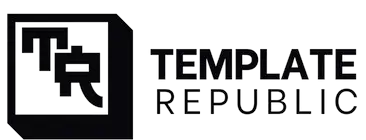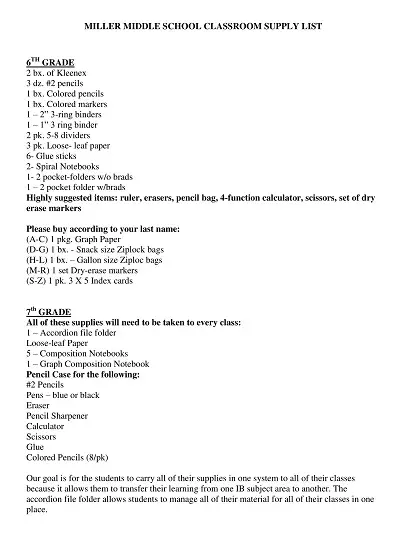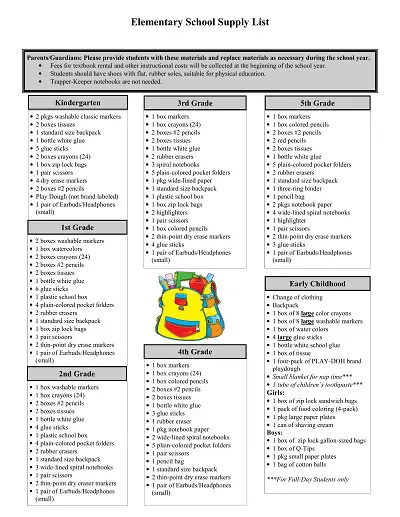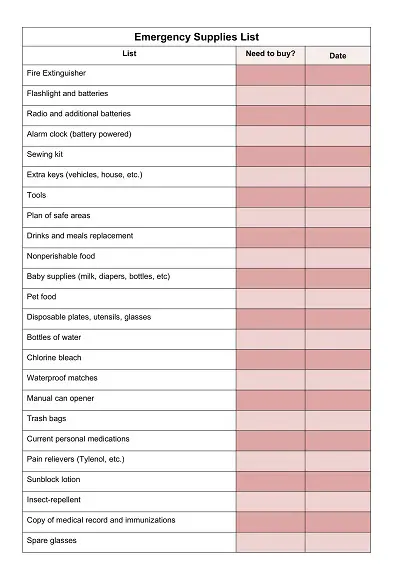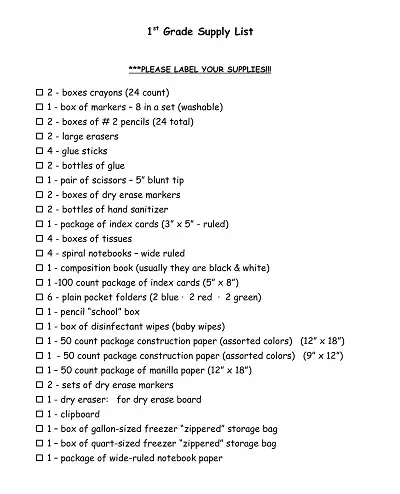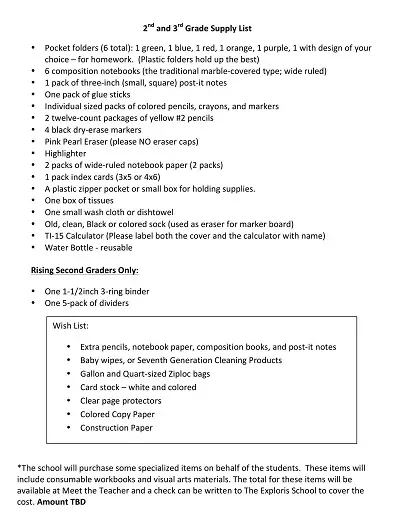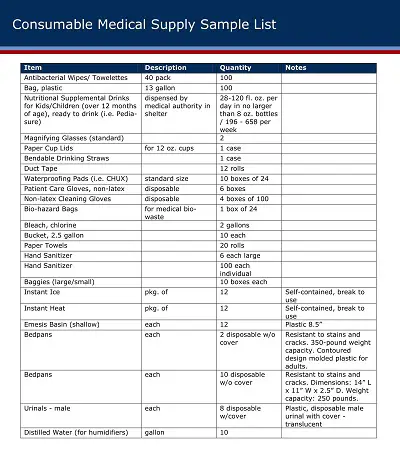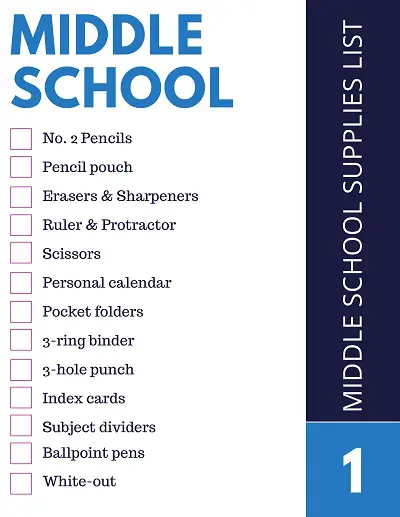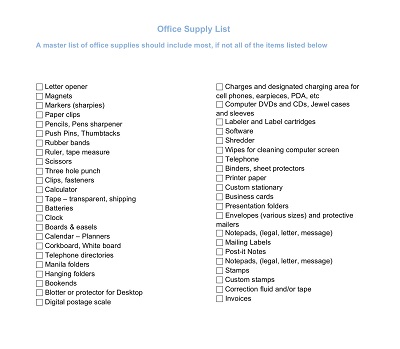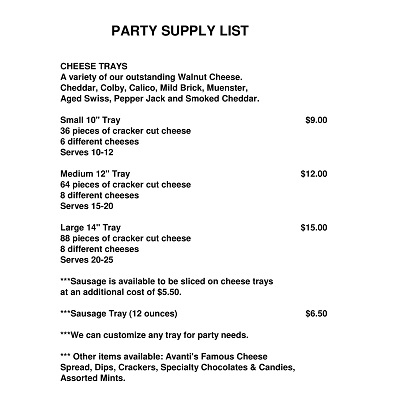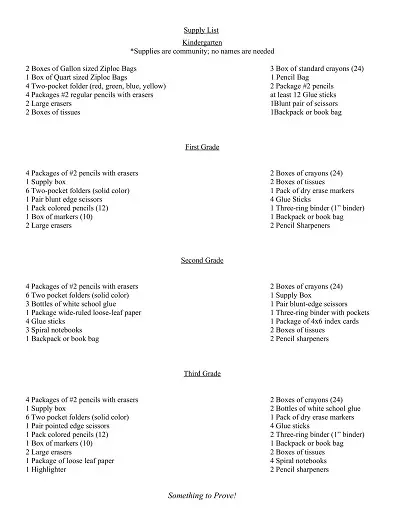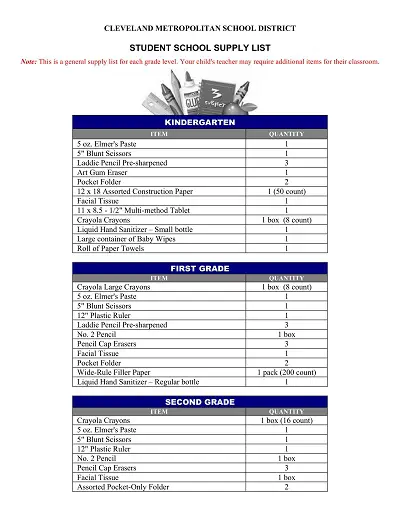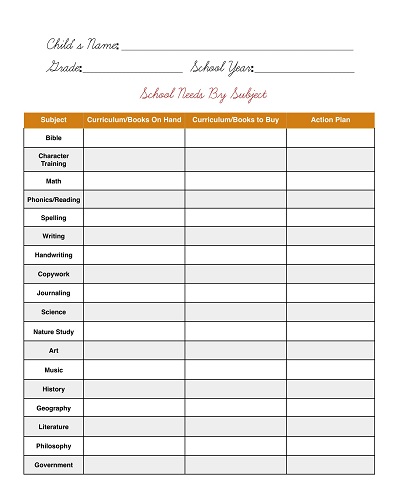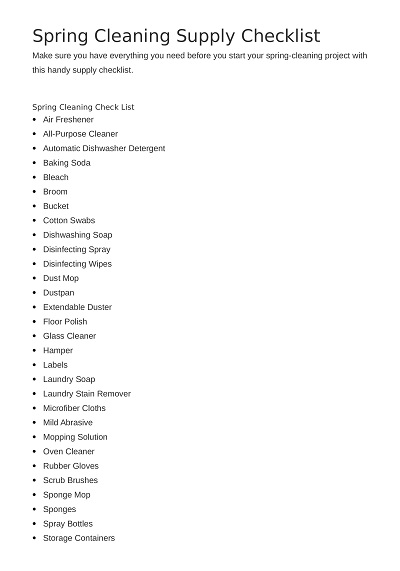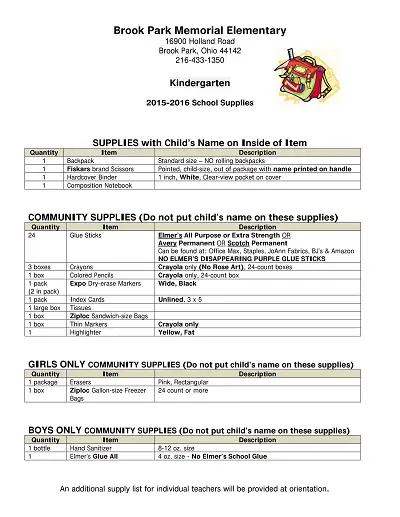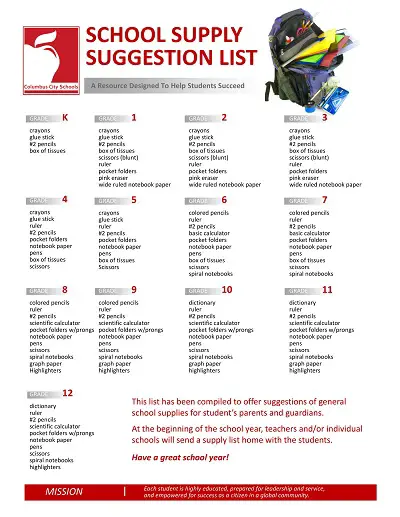25+ Free Printable Supply List Templates – MS Word, PDF
Supply list templates are your powerful companion for effective list-making. They are vital sheets for both personal and professional purposes. Whether you’re planning a party, running a small business, or managing a large project.
Table of Contents
These lists ensure you have everything you need, right when you need it. They save you from the headache of last-minute rush and forgotten essentials. These lists can be customized for any situation and are a versatile addition to your organizational toolkit.
Download Free Printable Supply List Templates
What is a Supply List?
Supply lists are systematic lists that detail the necessary supplies for a particular task. They are of various forms like education, hospitality, construction, events, and personal use. These lists provide an organized way of keeping track of the necessary items and ensuring nothing is missed.
Supply lists help educational institutions manage teaching materials and stationery to ensure a smooth academic experience. In the construction industry, supply list templates are invaluable for keeping track of the infinite machinery, materials, and tools. They simplify project management and mitigate the risk of over or under-stocking. Supply lists ensure you’re fully prepared even for personal use, such as planning a party or camping.
Types of Supply List
Supply lists are as diverse as the tasks they help to manage. Here is a brief overview of some common types:
- Inventory supply list: These are integral to businesses, big or small. They help maintain an accurate inventory record and ensure a smooth supply chain operation.
- Office supply list: Perfect for creating an exhaustive list of stationery, technology, cleaning supplies, and more. These supply lists keep your workspace well-stocked.
- School supply list: These are handy for teachers and parents alike. They can detail everything from textbooks to stationery items required for the academic year.
- Event supply list: When organizing an event, these pre-designed sheets can be a lifesaver. They help you keep track of everything from invites to decorations, food, and entertainment.
- Grocery list: These supply list sheets benefit household and professional use. They help to keep track of daily meals and avoid food waste.
- Construction supply list: Such supply lists are crucial to keep track of all the tools, materials, and equipment necessary for a construction project.
How to Write a School Supply List?
Creating a school supply list can be an organized and straightforward process if you follow these steps:
- Familiarize yourself with the necessary items: Obtain a list from your school, provided it is available. These lists are typically posted on the school’s website or at local stores. While these lists are a good starting point, remember that they might contain items included for sales purposes, so focus on necessary items like pens, pencils, notebooks, etc. Each subject you take could have unique requirements, so account for these.
- Write down all the required items: Write down each item you need and the required quantity. This first draft of your list will be comprehensive. Include items you already have and those you need to purchase.
- Review your current school supplies: Look around your house for any supplies you may already have. Check supplies from previous years or those belonging to siblings. Make sure to separate these items from the rest of your list.
- Evaluate the condition of these items: Scrutinize each item. Clean them if necessary and check for any broken or worn-out pieces. Items like binders, notebooks, and folders should be evaluated for reusability. If the items can be repaired, do so; otherwise, replace them.
- Create a condensed list of needed items: After evaluating your current items, make a more condensed list of items you still need to purchase. Use your judgment to decide whether replacing certain items will be wasteful or enhance your academic experience.
- Research the stores for shopping: Look up the stores where you can buy your supplies. This could be physical stores or online platforms. Set a budget for your purchases and try to stick to it. Watch out for discounts and deals that can help you save.
- Go shopping: Take your condensed list and go shopping. Stick to your list and avoid impulsive purchases of items you don’t need. Consider your financial situation or your parents when buying.
- Return home and organize: After shopping, organize your items neatly at home. Dispose of any unnecessary packaging and waste. This final step will ensure you are prepared for the upcoming academic year.
Benefits of Using Supply List Template
These templates streamline your operations, whether personal or professional. Here are a few key advantages of using these templates:
- Efficiency and Productivity: Providing a clear, organized list of what you need such templates helps you work efficiently. They cut the need for guesswork and reduce the risk of forgetful moments. These templates ensure you always have what you need when needed.
- Cost Management: With these templates, you can track your expenses and manage your budget. You can list all the necessary items to overspend or duplicate purchases and save valuable resources.
- Time-Saving: It’s time-consuming to make a supply list from scratch. these templates are customizable and save you time. You can use and adapt the same template for similar projects. They are the reusable resource that simplifies your processes.
- Stress Reduction: Forget the stress of last-minute scrambles for missing items. With a comprehensive supply list design, you can rest easy and know everything is covered.
- Better Planning: With everything listed in one place, supply list design offers a superior level of organization. They facilitate better planning and are used to assign tasks more efficiently in a team setting.
How to Create a Supply List Template?
Creating a template involves these steps:
Identify Your Needs
The first step in creating a template is identifying the materials or items you need for your operation or event. It might be helpful to break your needs into categories to make the list more manageable. For example, if you’re planning a camping trip, categories might include food, equipment, and first aid supplies.
Choose a Format
Choose a format as per your requirements. This could be a simple bulleted list, a table, or even a spreadsheet if you want to include additional information like quantities and costs. You `can download any of the templates of the supply list and customize it as you wish.
Fill in the Details
Once you’ve chosen your format, it’s time to fill in the details. Include every item you need and essential information such as quantity, cost, and supplier information, if applicable. Be as specific as possible instead of writing ‘pens’, for example, specify ‘blue ballpoint pens, medium point’.
Review and Update
Thoroughly review it to ensure no item has been left out. Once you start using the template, keep it updated. If you constantly need an item not on the list, add it. Likewise, if there are items you never order, remove them.
Best Practices of Using Supply List Templates
Using these templates to their fullest potential requires careful thought and a strategic approach. Here are some best practices to help you maximize the benefits of your supply list sheets:
- Regularly Update Your Templates: Keep your templates up-to-date to maintain their effectiveness. Remove items no longer needed and add new ones as necessary. Regular updates ensure your supply list remains a reliable resource for your projects.
- Categorize Your Items: Group similar items together to make your supply list more user-friendly. This logical approach makes it easier to locate specific items and provides a more precise overview of your supplies.
- Include Detailed Information: Include as much detail as possible, such as the item’s supplier, price, and preferred quantity. This approach can save time and prevent confusion down the line.
- Use a Standard Format: A standard format across all your templates gives a professional look. It would be easier for others to navigate and understand the list.
- Backup Your Templates: Keeping a backup of your templates is always a good idea. This ensures you don’t lose vital information in case of technical glitches or accidental deletions.
